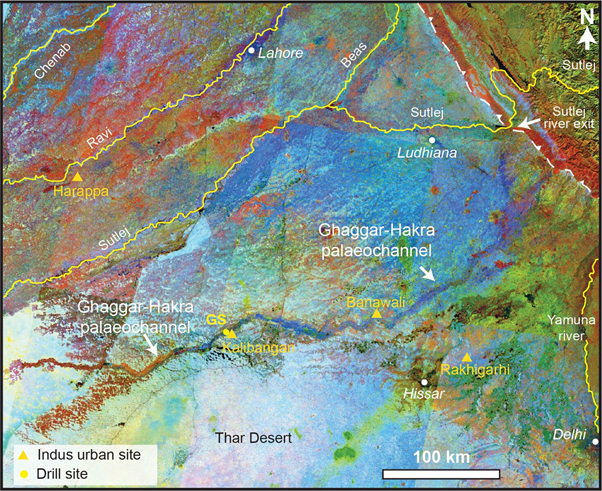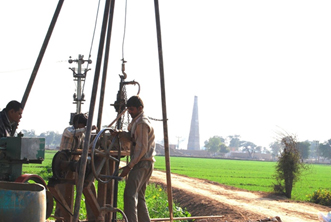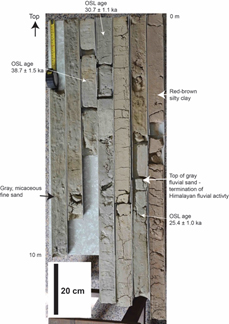It is a widely held hypothesis that urban cities of the Indus Valley Civilization developed around the Himalayan river systems, aided by the ample water resources provided by them. A recent study conducted by a team of researchers from IIT Kanpur and Imperial College London has challenged this hypothesis and instead demonstrated that stabilization of urban societies in the Indus Valley was caused by the migration of a big river rather than its arrival.
The Indus Valley Civilization flourished in the Indus river basin in what is now Pakistan and India. Some of the largest concentration of the Indus Valley urban settlements has been found by archaeologists near the divide between the Ganga-Yamuna and Indus river systems, along the now-extinct river that used to flow through the present-day Ghaggar-Hakra river channel.
This dried-up river is claimed to be the mythical Saraswati river, first mentioned in the Vedas. It is held that the river played a big role in the development of these Indus Valley urban cities and that the decline of the river led to the abandonment of Indus urban centres in this region. These issues though have, till now, remained unresolved because of a lack of detailed study into the age and origin of the river deposits in this region.

Trace of Ghaggar-Hakra palaeochannel on northwestern Indo-Gangetic plain. Landsat 5 TM colour composite satellite image mosaic. The Ghaggar-Hakra palaeochannel is visible as a sinuous, dark blue feature. The main core drilling site is located adjacent to the Indus urban centre of Kalibangan. Location of key Indus urban settlements indicated by triangles. Credit: P.J. Mason/S. Gupta (Imperial College London)
This email address is being protected from spambots. You need JavaScript enabled to view it.
(Landsat Imagery courtesy of NASA Goddard Space Flight Center and U.S. Geological Survey)
The current study, led by Professor Rajiv Sinha, Department of Earth Sciences at IIT Kanpur and which was published in the journal Nature Communications (https://www.nature.com/articles/s41467-017-01643-9), makes two path-breaking findings. By analysing sedimentary architecture, chronology and history, they have shown that the now-defunct river channel is the former course of the Sutlej river. Using the NASA Shuttle Radar Topography Mission, the team investigated the Ghaggar-Hakra river channel and found that the before the Sutlej changed its course, it left a valley-like scar which acted as a low-lying area to capture river flow during the monsoon. This meant that although the Sutlej river changed its course, a seasonal monsoonal river continued to flow in this channel.
They have also demonstrated that the flow of the Sutlej in this former course stopped much before the Indus urban settlements developed in this area. These findings are a part of the work by PhD student, Dr. Ajit Singh, supervised by Professor Sinha, and Professor Debajyoti Paul, Department of Earth Sciences, IIT Kanpur. Dr. Singh analysed the sediments at Kalibangan in Rajasthan (one of the sites of the Indus Valley settlements) using cutting-edge technology of U-Th dating of zircons at University College London deciphering the source of sediments. They drilled several cores (currently archived at National Core Archival Facility at IIT Kanpur) in the river channel to analyse river sediment layers deposited over time and using Optically Stimulated Luminescence dating, they analysed the energy stored in the mineral grains since their burial to pinpoint when the sediment was deposited.
On analysing the data, the team found that major river flow in this channel ceased around 8,000 years ago (at least 3,000 years before the stabilization of the Indus Valley settlements in this region).
Thus, this study firmly rules out the popular belief that a large Himalayan river nourished Indus Valley settlements along the Ghaggar-Hakra river channel. Instead, the monsoon rivers drawn to the valley formed by the former course of the Sutlej and the pooling of flood water in the valley, possibly provided more favourable conditions for the settlements to thrive. Contrary to popular belief, it was the departure of the river, rather than its arrival, that helped the Indus Valley centres in this region to thrive.













